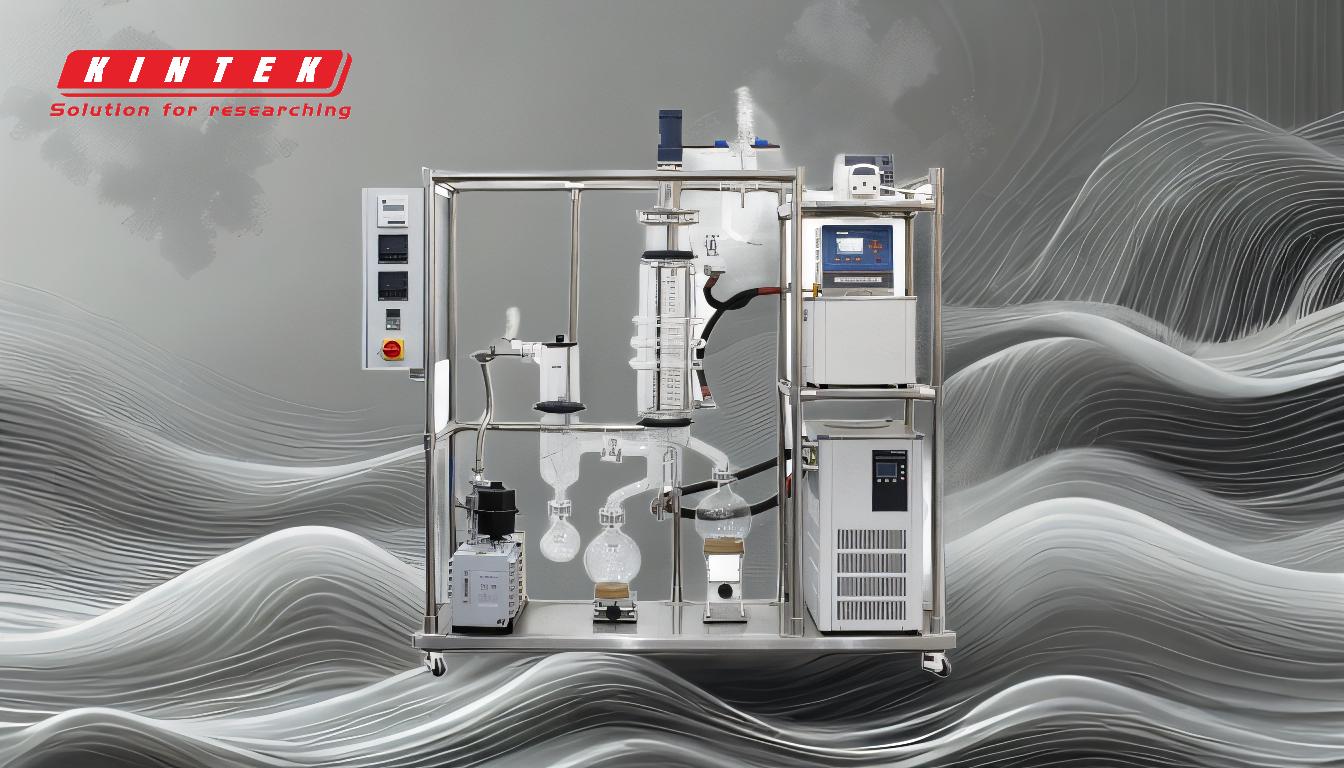Short path distillation and molecular distillation are closely related techniques used for separating and purifying substances, particularly those that are heat-sensitive or have high boiling points. While both methods operate under reduced pressure, molecular distillation is a specialized form of short path distillation that employs significantly lower vacuum pressures, typically less than 1x10^-2 mbar. This ensures that the mean free path of molecules is longer than the distance between the evaporator and condenser, eliminating back-pressure and enabling precise separation at the molecular level. Short path distillation, on the other hand, is a broader analytical technique that allows samples to travel a short distance under reduced pressure. The key differences lie in the operational pressure, the scale of application, and the specific use cases, with molecular distillation being ideal for high-purity separations and short path distillation being more versatile for smaller-scale operations.
Key Points Explained:

-
Operational Pressure:
- Molecular Distillation: Operates under extremely low vacuum pressures, typically less than 1x10^-2 mbar. This ensures that the mean free path of molecules is longer than the distance between the evaporator and condenser, allowing for separation before intermolecular collisions occur.
- Short Path Distillation: Operates under reduced pressure but not as low as molecular distillation. The pressure is sufficient to reduce the boiling points of the substances but does not achieve the same level of molecular separation.
-
Mean Free Path and Separation Mechanism:
- Molecular Distillation: The low pressure ensures that molecules travel from the evaporator to the condenser without colliding with other molecules, enabling precise separation based on molecular weight and volatility.
- Short Path Distillation: The reduced pressure allows the sample to travel a short distance, but there is still some degree of intermolecular interaction, making it less precise than molecular distillation.
-
Scale and Application:
- Molecular Distillation: Typically used for high-purity separations, especially for heat-sensitive or high-boiling-point substances. It is ideal for purifying and concentrating natural products.
- Short Path Distillation: More versatile and can be used for a variety of analytical and small-scale production purposes. It is limited in scale but produces high-quality distillate.
-
Equipment and Process:
- Molecular Distillation: Requires specialized equipment capable of maintaining extremely low pressures and precise temperature control. The process is more complex and costly.
- Short Path Distillation: Uses simpler equipment and is easier to set up and operate. It is more suitable for smaller-scale operations and analytical purposes.
-
Use Cases:
- Molecular Distillation: Ideal for applications requiring high purity, such as in the pharmaceutical, food, and cosmetic industries. It is also used for concentrating natural products like essential oils and vitamins.
- Short Path Distillation: Suitable for a wide range of applications, including research and development, small-scale production, and purification of heat-sensitive compounds.
-
Comparison with Fractional Distillation:
- Molecular Distillation: Unlike fractional distillation, which relies on temperature gradients and surface area for separation, molecular distillation uses low vacuum pressure and a short-path vacuum distillation process to separate molecules before intermolecular collisions occur.
- Short Path Distillation: While similar to fractional distillation in some respects, short path distillation operates under reduced pressure and is more suitable for smaller-scale, high-quality separations.
In summary, while both short path distillation and molecular distillation operate under reduced pressure and are used for separating and purifying substances, molecular distillation is a more specialized and precise technique that operates under significantly lower pressures. This allows for high-purity separations, making it ideal for specific applications in industries requiring high-quality, heat-sensitive products. Short path distillation, on the other hand, is more versatile and suitable for smaller-scale operations and analytical purposes.
Summary Table:
| Aspect | Molecular Distillation | Short Path Distillation |
|---|---|---|
| Operational Pressure | Extremely low (<1x10^-2 mbar) | Reduced pressure (not as low as molecular distillation) |
| Separation Mechanism | Molecules travel without collisions, enabling precise separation | Some intermolecular interaction, less precise separation |
| Scale | High-purity separations, ideal for heat-sensitive or high-boiling-point substances | Versatile, suitable for small-scale operations and analytical purposes |
| Equipment | Specialized, complex, and costly | Simpler, easier to set up and operate |
| Use Cases | Pharmaceutical, food, cosmetic industries; concentrating natural products | Research, small-scale production, purification of heat-sensitive compounds |
Need help choosing the right distillation method for your application? Contact our experts today for personalized guidance!










